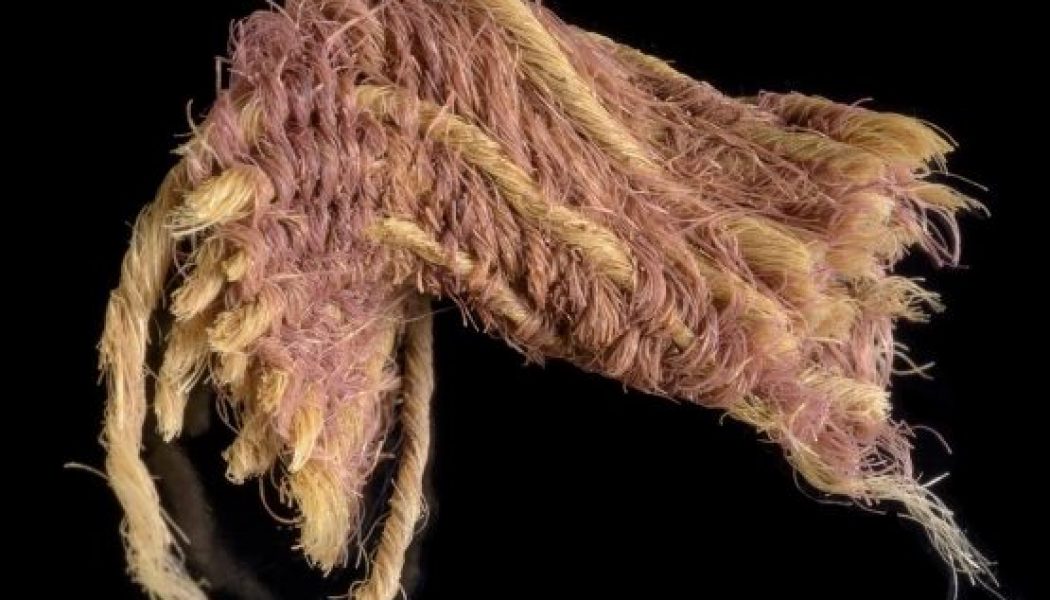A new archeological discovery may shed new light on the way King David and King Solomon dressed 3000 years ago.
Researchers found remnants of woven fabric, a tassel, and fibers of wool dyed with royal purple in Israel’s Timna Valley, a color associated with royalty in the ancient world and mentioned in the Bible as being worn by Israelite kings.
The Timna Valley is about 20 miles north of the Gulf of Aqaba in the Red Sea, and was a source of copper for thousands of years.
Radiocarbon dating puts the textile discovery at around 1000 BC, corresponding to the United Monarchy period, when the biblical figures David and Solomon ruled Jerusalem.
“This is a very exciting and important discovery,” said Dr. Naama Sukenik, curator of organic finds at the Israel Antiquities Authority. “In antiquity, purple attire was associated with the nobility, with priests, and of course with royalty.”
He noted that the dye was made from a gland in the body of mollusks found in the Mediterranean Sea – located 185 miles from the Timna Valley – and was often more valuable than gold.
“Until the current discovery, we had only encountered mollusk-shell waste and potsherds with patches of dye, which provided evidence of the purple industry in the Iron Age. Now, for the first time, we have direct evidence of the dyed fabrics themselves, preserved for some 3000 years,” Sukenik said.

A tassel found in Israel’s Timna Valley dating to 1000 B.C., the era of Kings David and Solomon. (Credit: Dafna Gazit/Courtesy of the Israel Antiquities Authority.)
The discovery was a result of a joint project of the Israel Antiquities Authority, Tel Aviv University, and Bar-Ilan University.
Prof. Erez Ben-Yosef from Tel Aviv University’s Archaeology Department said the extremely dry climate in the valley helped preserve the textiles.
“If we excavated for another hundred years in Jerusalem, we would not discover textiles from 3000 years ago. The state of preservation at Timna is exceptional,” he said.
Prof. Erez Ben-Yosef said he believes copper-production center at Timna was part of the Biblical kingdom of Edom, which bordered the kingdom of Israel to the south.
“The new finds reinforce our assumption that there was an elite at Timna, attesting to a stratified society. In addition, since the mollusks are indigenous to the Mediterranean, this society obviously maintained trade relations with other peoples who lived on the coastal plain. However, we do not have evidence of any permanent settlements in the Edomite territory. The Edomite Kingdom was a kingdom of nomads,” he said.
He said it also shows that the Israelite kings could have been similar.
“It is wrong to assume that if no grand buildings and fortresses have been found, then biblical descriptions of the United Kingdom in Jerusalem must be literary fiction,” he said.
“Our new research at Timna has showed us that even without such buildings, there were kings in our region who ruled over complex societies, formed alliances and trade relations, and waged war on each other. The wealth of a nomadic society was not measured in palaces and monuments made of stone, but in things that were no less valued in the ancient world – such as the copper produced at Timna and the purple dye that was traded with its copper smelters,” Ben-Yosef said.
Follow Charles Collins on Twitter: @CharlesinRome
Join Our Telegram Group : Salvation & Prosperity










